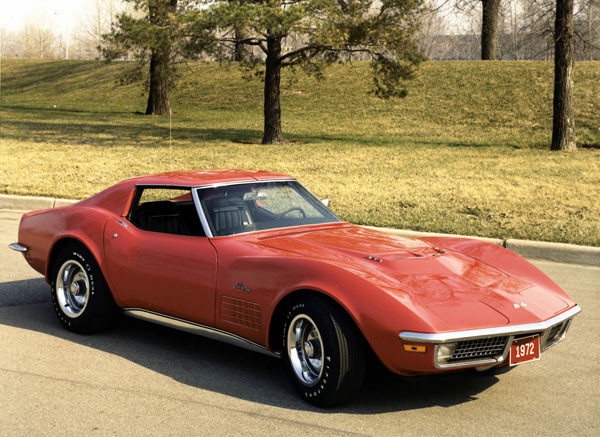
The Chevrolet Corvette has always embodied the American concept of a classic sports car. It went into production as the world’s first mass-produced plastic car in 1953 and since then has continued to prove that Chevrolets do not have to be boring.
The introduction of the Corvette was seen by GM executives as a means of testing new technology. As an example, the body was to be of fibreglass as used during WWII in naval patrol boats – hence the choice of the name Corvette. By confining their testing to a sports car, any adverse problems were seen also as less likely to have any impact on their saloon market. Development budgets were never large for the Corvette. The glass fibre bodywork required much lower tooling costs than a steel body and could be changed quickly. The rest of the car could be sourced from the corporate parts bin.
The body style of early models made them look racy but the same couldn’t be said about their performance. Being restricted to the use of an ancient six-cylinder engine with a slight upgrading to 112 kW and a two-speed automatic transmission their performance didn’t compare with other purpose built sportscars. Even the box chassis and leaf-sprung back axle dated back to the age of the horse and cart.
Development of the engine to enable a top speed of 193 km/h with acceleration to match and then the fitting of a four-speed gearbox in the 1957 model gave the car a more sprightly performance. Further improvements were constantly planned but in most cases the conservative GM management canned these before they ever got into production, especially if they were mooted around the same time as safety bodies raised the question of automotive safety in general.
In 1962 the Corvette went through a major redesign with a new chassis frame, with all-independent suspension and a new body style, either as a fastback coup‚, with divided-pane rear window or a convertible. Thus the Sting Ray was born. Its major weakness was the fitting of totally inadequate drum brakes but even so it sold well. In 1964 the Corvette lost its split rear window and the 1963 model became an instant classic.
For 1965 there were disk brakes all round, and the option of a 6.5 litre V8 engine. All Corvettes were fast but some were faster than others. The all-time muscle car of 1966 offered a range of engines from 5.3 litres and 224 kW to the 7 litre model with 317 kW and a massive 628 Nm of torque. The car continued to be gradually changed, refined in some ways, but made much less special in others. During the early 1970s the engines were detuned to meet emission requirements and even into the 1980s new models, still with a fibreglass body, were regularly introduced.








